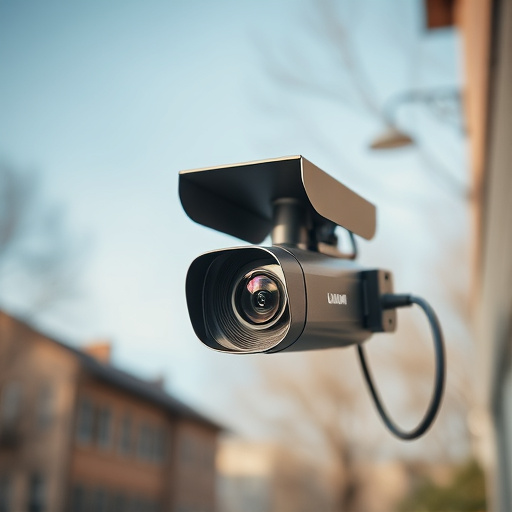Nighttime surveillance with battery-powered covert nanny cameras faces challenges from "glint," caused by light reflections amplifying in low-light conditions. Understanding glint sources like direct lighting and moonlight reflecting off glass or objects is key for developing countermeasures. These cameras use advanced algorithms to detect and differentiate glints, ensuring clear images in dark settings, but require regular recharging due to power demands.
In the realm of covert surveillance, particularly with battery-powered nanny cameras, understanding night glint is paramount. This subtle yet revealing effect, caused by reflections from surfaces like windows and lamps, can obscure crucial visual data in low light conditions. While battery-powered cameras offer advantages such as discreteness and portability, they face challenges in detecting glints efficiently. This article explores advanced techniques to overcome these hurdles, enhancing the quality of night-time surveillance with covert nanny cameras.
- Understanding Night Glint: Challenges and Causes
- Battery-Powered Cameras: Advantages and Limitations
- Advanced Techniques for Glint Detection in Low Light
Understanding Night Glint: Challenges and Causes
Night-time surveillance presents unique challenges for camera systems, particularly in the case of battery-powered covert nanny cameras designed for discreet operation. One of the primary hurdles is the phenomenon known as “glint,” where light reflections from surfaces like windows or shiny objects can distort the image quality, rendering them useless for clear monitoring. This issue is exacerbated during low-light conditions, when the camera’s sensitivity increases to capture available light, inadvertently amplifying these unwanted reflections.
The causes of night glint are multifaceted. It can result from direct lighting from streetlamps or interior lights reflecting off glass surfaces, or even from the moonlight illuminating shiny objects in the field of view. These reflections often appear as bright spots or lines on the camera’s sensor, creating a distracting visual effect that obscures the actual scene being monitored. Understanding these causes is crucial for developing effective countermeasures to ensure clear and reliable images, especially in scenarios where subtle details matter most, such as in home security or childcare settings equipped with battery-powered cameras.
Battery-Powered Cameras: Advantages and Limitations
Battery-powered cameras, particularly covert nanny cams, offer distinct advantages in terms of portability and convenience. They eliminate the need for cumbersome power cables, allowing for easy placement and unobtrusive monitoring. This feature is invaluable for applications like home security, surveillance, or discreet observation, where a wireless setup ensures minimal disruption to daily activities.
However, these cameras also face limitations related to battery life and power management. Rechargeable batteries have finite lifespans and require regular replenishment, which can be cumbersome if not properly planned. Moreover, constant power consumption from continuous recording or low-light conditions may drain batteries rapidly, requiring users to stay vigilant for timely recharging to avoid potential missed surveillance periods.
Advanced Techniques for Glint Detection in Low Light
In low-light conditions, advanced techniques for glint detection become invaluable, especially with battery-powered covert nanny cameras designed for discreet surveillance. These cameras employ sophisticated algorithms to analyze tiny light reflections, known as glints, that can reveal the presence of individuals or objects in darkness. By processing multiple frames at high speeds, these devices identify subtle variations in light intensity, enabling them to distinguish between genuine glints and background noise.
This enhanced glint detection capability is crucial for ensuring accurate surveillance, particularly in challenging settings like poorly lit rooms or outdoor areas with reflected lights. Battery-powered covert nanny cameras equipped with this technology offer unparalleled discretion while providing clear, reliable visuals even under the most demanding conditions.
The detection of camera lens glint during low light conditions is a complex challenge, particularly for covert nanny cameras. Through understanding the causes and challenges of night glint, this article has explored advanced techniques that enhance performance in battery-powered systems. By leveraging these methods, Battery Powered Covert Nanny Cameras can capture clear images even under difficult lighting scenarios, ensuring optimal surveillance capabilities. Future developments in low-light imaging will continue to revolutionize covert monitoring, offering enhanced privacy and security.
